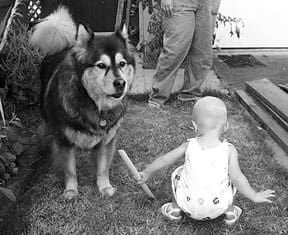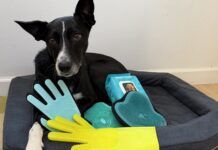Children have never been a consideration for me, and since neither my husband nor I have children of our own, I’m also not likely to have grandbabies visiting. So why should I care whether my dogs are good with children or not?
Because children exist.
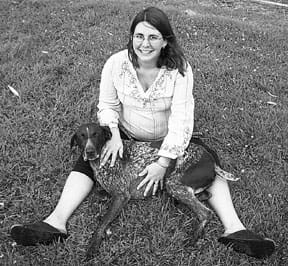
Wherever you go in today’s world, there are likely to be young humans. Unless you plan to keep your dog cloistered in your own home, shut away when friends with children visit, you need to help her be comfortable with children. Your dog’s very life could depend on it.
At one time, our culture was far more tolerant of dog bites than it is today. When I was a kid, if a dog bit a child, Mom’s response was, “So, what did you do to Nipper to make him bite you?” Children were expected to learn how to respect a dog’s space, and if Johnnie acquired a few nicks from a dog’s teeth in the process, so be it. Today, one bite, even a minor nip, can be a death sentence for a dog. Of course, in the “old” days, Mom and Dad didn’t risk losing their homeowner’s insurance over a minor dog bite or two, either.
According to statistics from the Centers for Disease Control in Atlanta, Georgia, children are the most frequent victims of dog bites in this country. That’s no accident. From a dog’s perspective, babies and children are weird, unpredictable, noisy, move erratically, make long, hard, direct eye contact, often cause pain, and don’t respond appropriately to a dog’s appeasement, deference, or self-defense signals.
Since most children aren’t allowed to learn by experience that when a dog stiffens, growls, and curls his lip, the next thing that usually happens is a snap or bite, kids tend to be oblivious to the various levels and intensities of a dog’s warning signals. No wonder dogs perceive children as threatening!
Veterinary behaviorist Dr. Ian Dunbar, of Berkeley, California, tells audiences at every opportunity that the best insurance against future dog bites to humans, young and old, is puppy socialization. If it’s too late for puppy socialization, it’s not too late to start playing catch-up with remedial socialization. If you already have a baby, are planning to have one soon, have distant plans for children or, like me, don’t ever intend to have human puppies, now’s the time to start your personal kid-bite insurance program.
Socializing Puppies to Babies and Kids
Many young couples acquire a puppy early in the relationship, long before the advent of the first baby. The puppy is a surrogate child, and the couple dotes on him – taking him everywhere, allowing him to sleep on the furniture, even share the marriage bed. For several years the dog enjoys his status as an only child. The couple tends to socialize with other childless adults, and the dog rarely sees human babies. Then the couple decides it is time to have a baby. Now they have a problem.
Puppies go through a critical learning period in the first few months of their lives. During this time, usually between the ages of four weeks and four months, they learn which things in the world are safe and rewarding, which ones are painful and dangerous and should be avoided, and which have no consequence. Anything not experienced during this critical period tends to automatically fall into the “dangerous” category.
This is an important survival tool for wild animals; if they don’t know for sure that something is harmless, it’s safest for them to behave as though it’s not. Herein lies the problem. If a puppy doesn’t learn that children are “safe and rewarding” during those critical months, he’s likely to assume that they are a threat.
This assumption is often supported by the behavior of many of the children that a dog meets. Human puppies poke fingers into canine ears, prod them with pencils, hit them over the head with wooden blocks, and pull fur in sensitive places. They stare directly into a dog’s eyes (a direct stare is a threat in the canine world). They compete for food, toys, and the attention of grownups. They move erratically – running, tripping, falling, swinging their arms around – and make weird noises. If you stop and think about it, it’s a miracle that dogs tolerate kids at all!
In a perfect world, every new puppy would be thoroughly socialized to babies, toddlers, and children while she was in her critical learning period. Unfortunately, many vets recommend that their clients wrap their puppies in cotton wool and keep them strictly at home until they have been fully vaccinated – which won’t occur until weeks after the critical learning period.
It’s vitally important that your puppy have positive experiences with the big wide world during her first four months, long before she’s fully vaccinated. The good news is that you can do this without going against your vet’s recommendation or exposing your puppy to life-threatening diseases. Here’s how:
Invite lots of people – including babies and children, vaccinated healthy puppies, and vaccinated, healthy, friendly dogs – over to your house for puppy parties. Give everyone handfuls of really yummy treats to feed to the puppy. (Tell everyone the puppy has to sit to get her treats and you’ll also be teaching her not to jump up on people at the same time.) Monitor your pup’s interactions with children to be sure they are all positive. Have children of all ages feed your puppy lots of treats and she’ll quickly decide that kids are a good thing, not dangerous.
You can also take your puppy out into the community to safe, canine-friendly locations. Don’t go to busy dog parks and turn her loose to play, but do take her with you to places such as a well-run puppy kindergarten class, where you can monitor her inter-actions with kids and prevent her exposure to potential disease threats. Teach her that the world, especially the small humans of the world, are a source of pleasure and reward, and you greatly reduce the risk of “Dog Mauls Toddler” headlines in your dog’s future.
Adult Dog/Kid Conditioning
Maybe it’s too late to socialize your dog to babies and children during her critical learning period. That stage of her life has long passed. Is it too late to teach her to live with children? Not necessarily. It’s more difficult, but not impossible.
If your dog’s experiences with children up until now have been neutral and she’s otherwise well-socialized, seek out gentle children and have them feed her treats. Watch her closely. If she seems cheerful and happy, continue to find opportunities for her to have positive experiences with kids.
If your dog is tense or nervous with children, take it more slowly. Let her see babies and kids at a distance, and you feed her treats. Select a very special treat, like steak or chicken, and feed it to her only in the presence of children and babies. When she notices a child in the distance, steak starts raining from the heavens – tiny tidbits, nonstop. When the child leaves, the flood of steak stops. Every time a child appears, the steak starts. When the child leaves, the steak stops. You want your dog to think that children and babies, and only children and babies, make steak happen.
When your dog looks at you happily for her steak when she sees a child in the distance, you know she’s starting to perceive children as reliable predictors of steak. Your goal is to convince her to like them close up as well, through the continued association with really wonderful food.
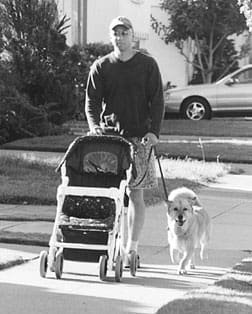
Gradually move closer to the children, repeating the exercise, always watching your dog’s body language to be sure she’s comfortable.
This is critical: Never punish your dog for showing signs of discomfort or even aggression, such as growling, when children are around. The growl is a critically important warning sign. It’s your dog’s way of telling us she’s not comfortable around kids. If you punish her, she may learn to suppress the warning sign, making her far more likely to bite a child one day, severely and without warning.
Think about it: You can’t punish your dog into loving children! You have to use positive conditioning and reinforcement to convince her that kids are good to have around.
The older your dog is, the longer she’s been uncomfortable around children, and the stronger her response to them is, the longer this process (known as counter-conditioning and desensitization or CC&D) will take.
Of course, you’ll always supervise her around children, even if she loves them. If your dog is merely tolerant of children, you’ll have to supervise much more closely. If she’s truly uncomfortable with them, you’ll need to confine her in a safe place where children aren’t permitted, such as her crate in your bedroom, whenever you cannot actively supervise their interactions.
Preparing Your Dog for Baby’s Arrival
When a baby – and eventually a child – is coming to live at your house, your task is more daunting, and more vitally important. As soon as you know Baby’s on the way, start helping your dog get ready. Whatever changes are going to occur in her routine should happen long before Baby arrives, so she won’t associate them with the arrival of the new family member. Ideally, you’ll keep her as much of a full-fledged member of the family as she is now, finding ways to incorporate her presence into your daily baby-routine rather than excluding her.
Here are some suggestions for helping the baby’s introduction to the family positive for your dog:
• The nursery: If this is now the dog’s room, don’t wait until the final countdown to repaint and restrict her access to it. Redecorate as far in advance as possible. Put a soft cushion for your dog in one corner of the room and teach her a “Go to your bed” exercise. Whenever you’re puttering in the nursery, reinforce her with treats for lying there quietly. You can give her a food-stuffed Kong there. When you’re not in the room, use a baby gate across the doorway to keep your dog out.
• Restricted access: If you plan to restrict your dog’s access to other rooms after the baby is born, do it now, using baby gates and closed doors, and positive reinforcement to reward her for staying in approved areas. Try to allow her access to as much of the home as possible.
• Your dog’s routine: Anticipate any changes in your routine that will change your dog’s. If Mom walks her three times a day and Dad will be taking over dog-walking for a while, start making that switch now. If Dad will become your dog’s primary caretaker, have him assume those duties as soon as possible. Plan to include Baby’s presence in as many of your dog’s activities as possible, so she thinks Baby makes all the fun stuff happen.
If you intend to hire a pet-sitter to provide some dog care, integrate him or her into the routine several months before Baby arrives. If Mom plans to walk the dog while pushing the stroller, practice this while Mom is still active and agile, so she can figure out the logistics of managing leash, dog, and stroller without tipping Baby onto the sidewalk. In fact, if your dog doesn’t already have good leash manners, start immediately by standing still when she pulls on the leash and consistently rewarding her for walking with you (see “Loose Leash Walking: Training Your Dog Not to Pull“).
• Greetings: If your dog hasn’t already learned how to greet people politely, give yourself several months to teach and reinforce polite greetings. Reward her with treats and attention for sitting in front of you. If she jumps up, turn your back and step away from her. Be consistent! If you sometimes reward her for jumping up, she won’t understand that it’s inappropriate to jump up when Mom or Dad’s arms are full of Baby.
• Doorways: If your dog doesn’t already know how to wait before going through a door, there’s no time like now to teach her (see “Training Your Dog to Stay Using Cues“). You don’t want her to knock over a pregnant Mom as she comes and goes, and you certainly don’t want to worry about chasing an escaped dog down the street while Baby lies unattended on his blanket on the living room floor.
• Stairways: If you have stairs in your home, your dog may think it’s a great game to charge up and down them at your side. It’s much safer for your babe-in-arms – or for the very pregnant Mom – to either have the dog wait at the top or send her down the stairs ahead of you. Start this routine now, making it a fun, positive game. You can toss a treat or toy down the stairs for her and have her wait there until you join her, or ask her to “Wait” until you get to the bottom and then invite her to “Come on down!”
• Leave it: Teach your dog a positive “leave it” cue so she’ll happily respond (and be rewarded for it) when you ask her to stop kissing the baby, or to drop the pacifier that will inevitably fall on the floor (see “Teaching Your Dog to “Leave It” On Cue).
• Escape route: Before you know it, Baby will be crawling around after your dog on the floor. Even dogs who love kids need a getaway plan. Provide your dog with an escape route, such as a low barrier she can jump over or an elevated surface she can jump on so she can escape from Baby’s grasp when she’s had enough. Show your dog how to use it, and practice until she’s skilled at the maneuver. Dogs who are cornered by small tormenters without a way to escape may feel compelled to bite in self-defense.
How to Handle Your Dog When the Baby Comes Home
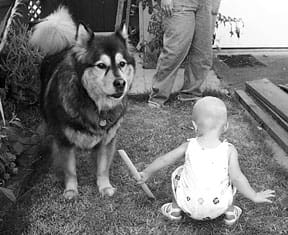
When Baby arrives, your dog will be excited to see Mom after she’s been away. The day before Mom and Baby come home, have Dad bring home a blanket that’s been wrapped around Baby, to pick up his scent. Show the blanket to your dog. Let her sniff it, and feed her yummy treats. Then put the blanket in her bed. When Baby comes home the next day, his scent will already be familiar to your dog.
When you all get home, have Dad hold Baby outside while Mom goes in to greet your dog. If the dog forgets her polite greeting manners in her excitement, she won’t hurt Baby, and she won’t get yelled at. You don’t want her first introduction to Baby to be negative! Then have Dad come in with Baby, while Mom has treats ready to reward the dog for greeting Dad and the human puppy nicely.
Rather than banishing the dog to the backyard while everyone settles in, encourage her to lie calmly on her rug, or if necessary, use a tether to keep her out of the midst of chaos until things calm down (see “Tethering Your Dog for Training“). Have Mom sit on the sofa with Baby while Dad rewards the dog’s good behavior on her rug with treats, praise, and a Kong stuffed with irresistible goodies.
If you’ve done your homework well, your dog will soon love Baby as much as you do, and you’ll have successfully set the stage for a long and happy relationship between your dog and your child.
NEWBORNS AND DOGS: OVERVIEW
1. Enlist the help of friends with children and neighborhood children to socialize your pup during his optimum socialization period up to the age of 14 weeks and beyond.
2. Find locations (vet’s office? groomer’s?) where there will be sympathetic, dog-friendly folks willing to help you with remedial socialization for your adult dog.
3. Make preparations for your new baby well in advance so the experience is as positive and stress-free for your dog as possible.



